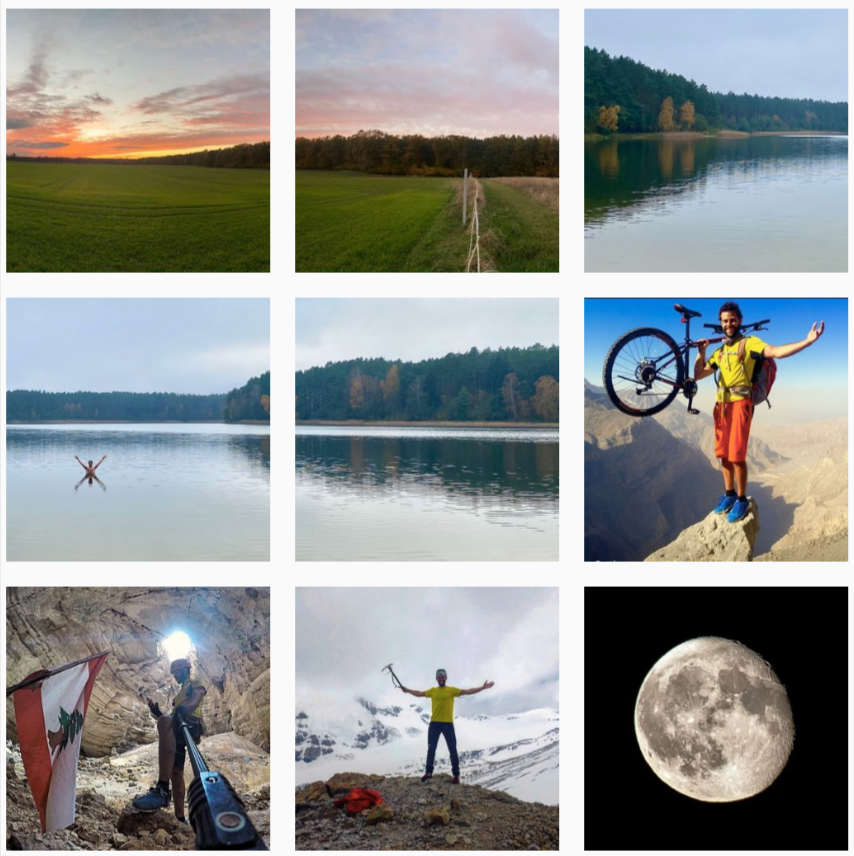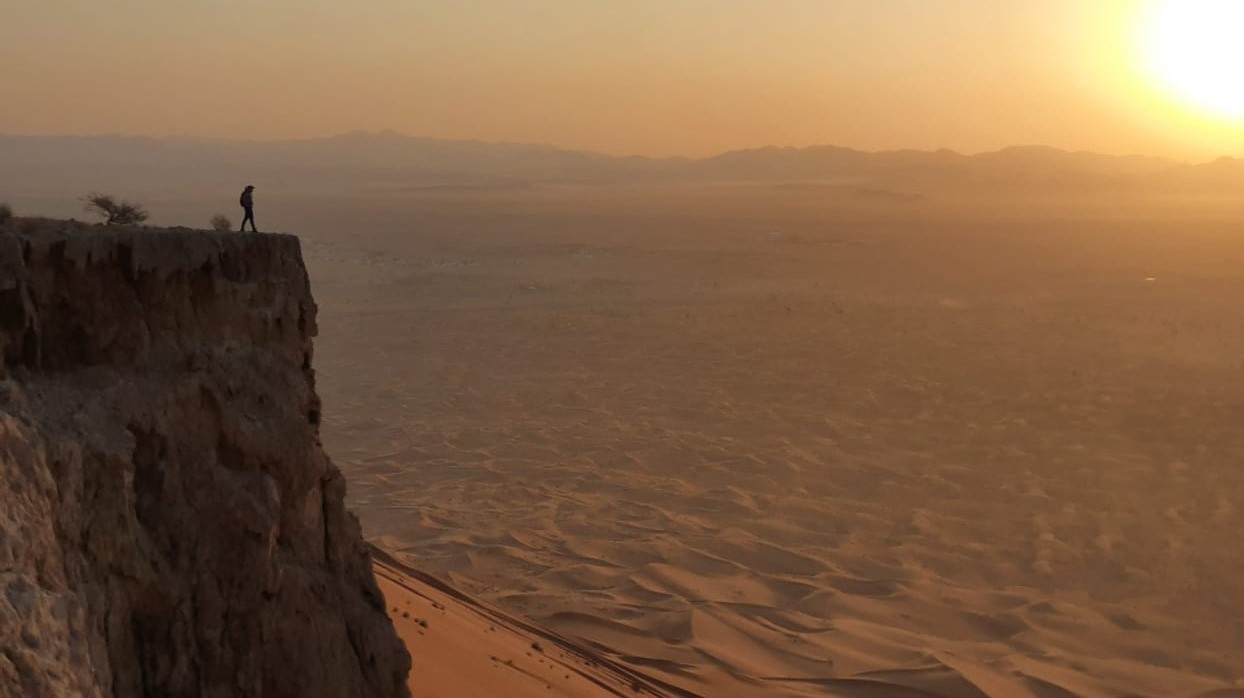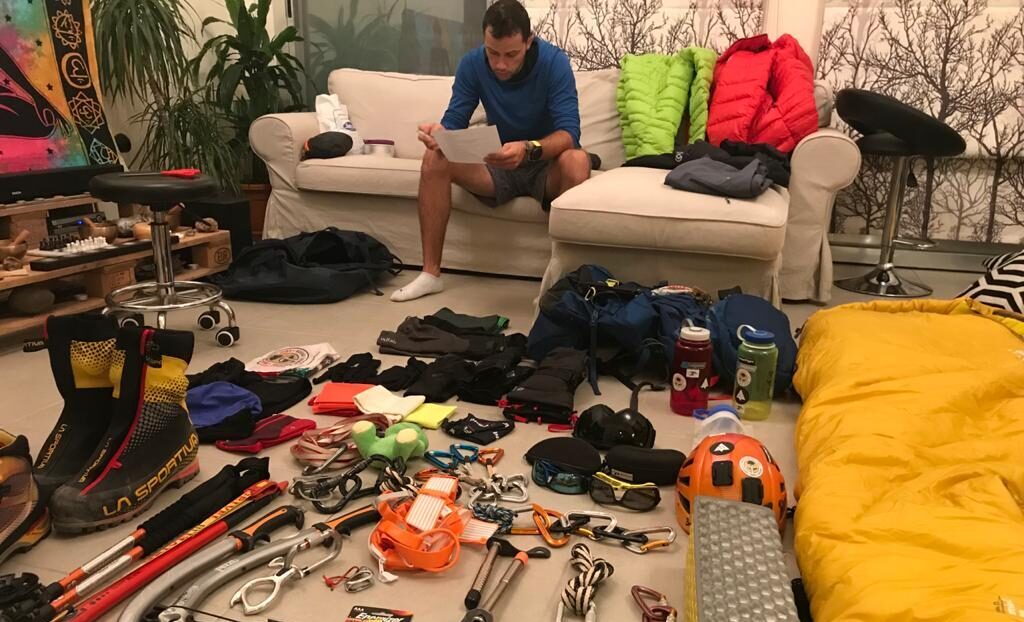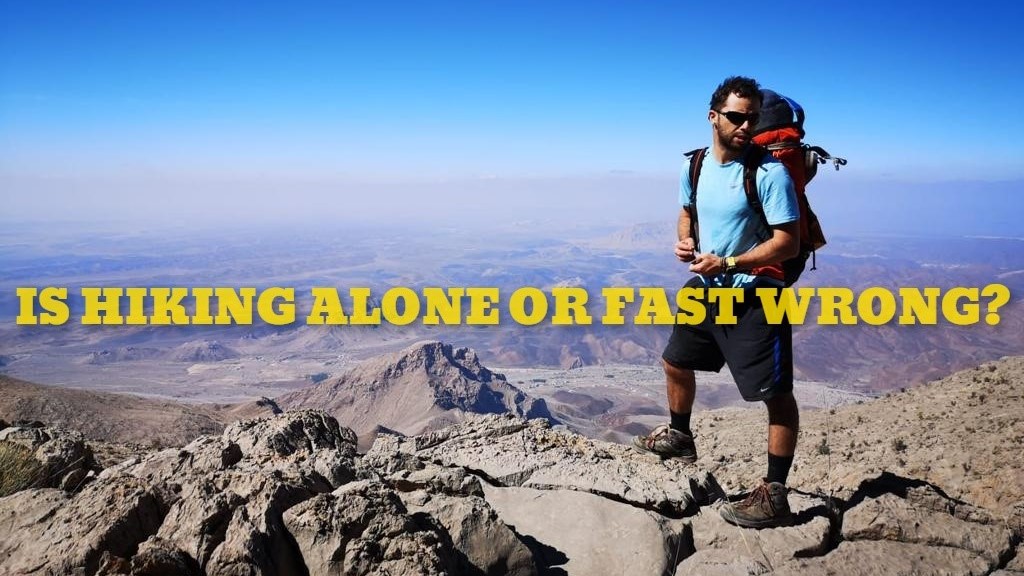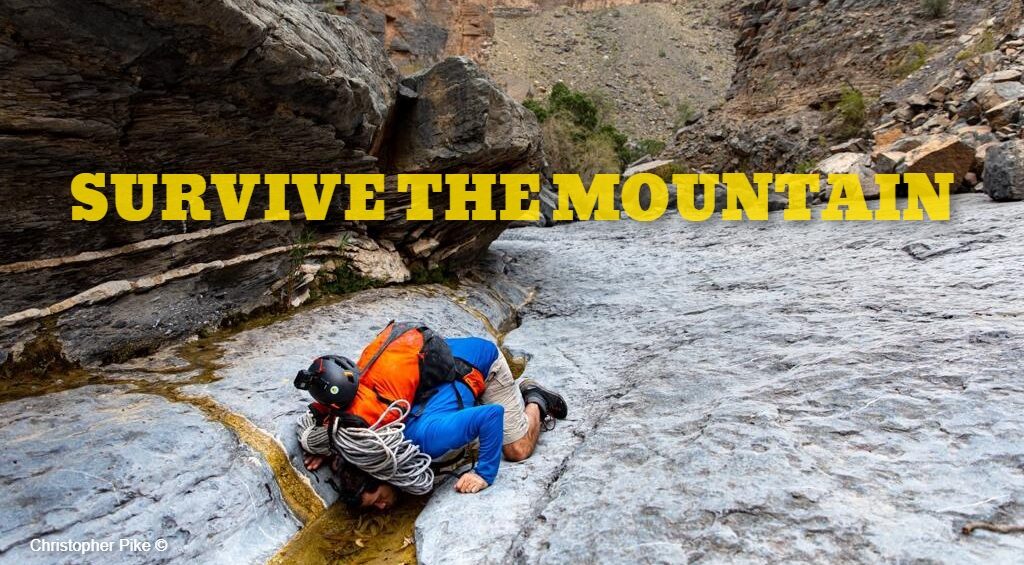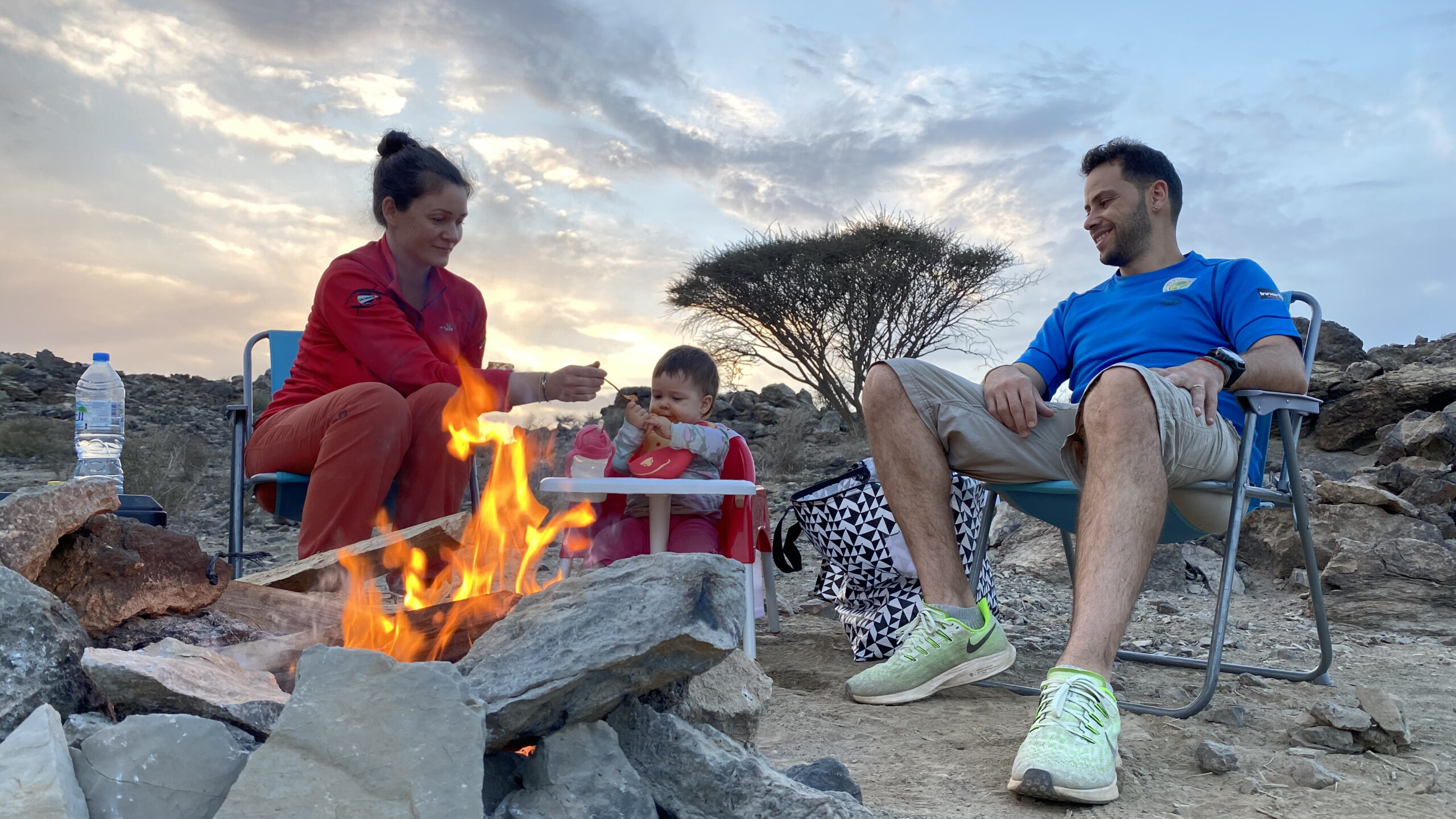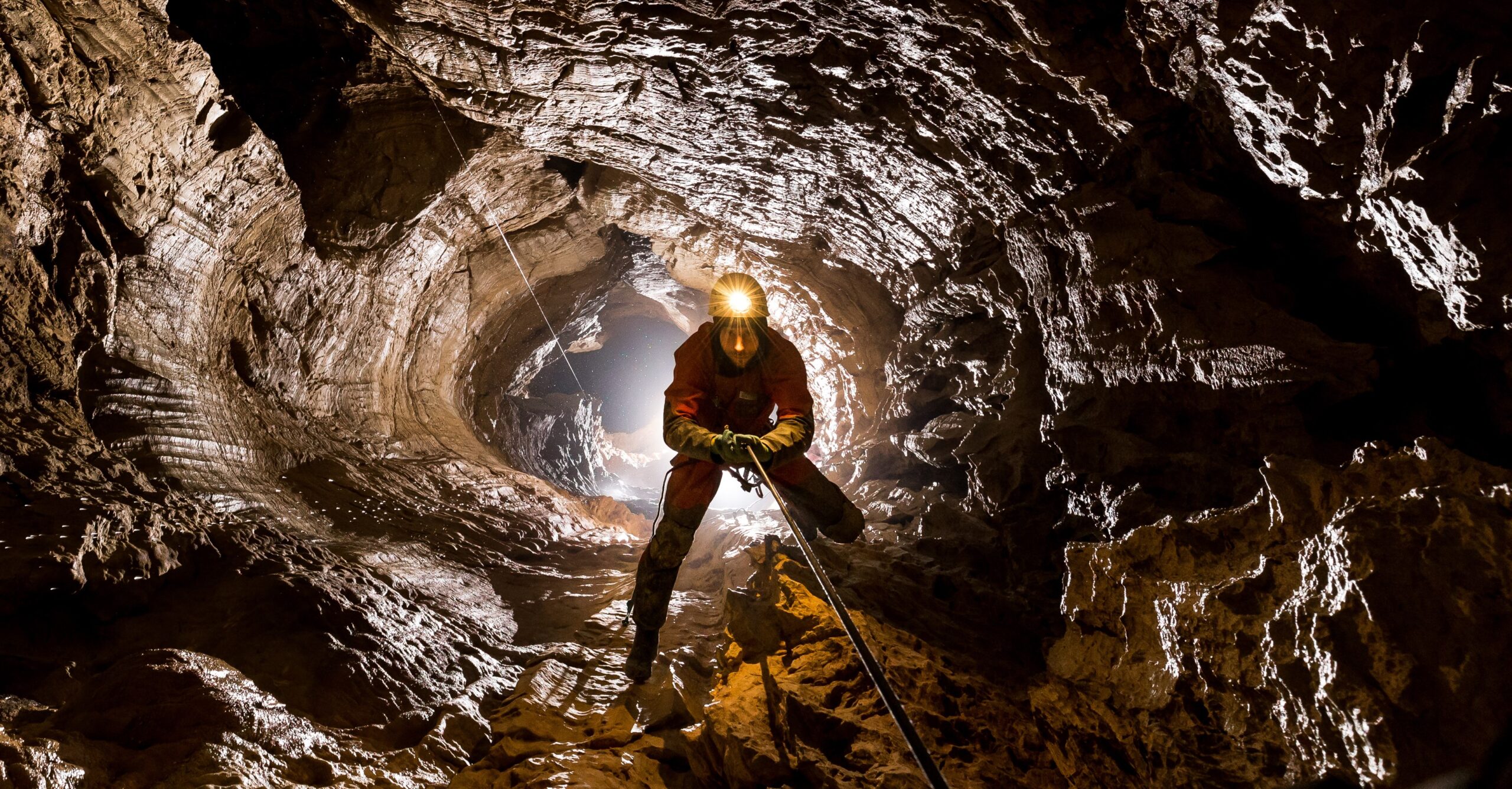Wadi Saada is unique to its constant flowing water. It is also part of the infamous Wadi Al Muaiden, known for its dam where picnic goers gather. Don’t let this non-technical canyon deceive you for being an easy one. Wadi Saada should be taken seriously amongst the medium to hard canyons for 2 reasons:
- For constantly having to climb your way around boulders.
- You will spend a significant amount of time route-finding.
I rate it as 2-B-PG-IV based on the ACA canyon rating.
I have been to Wadi Saada twice so far, and I have to say it did not get any easier the second time. We lost a lot of time searching our way through, the first time we explored Wadi Saada. It started to rain in the early afternoon that day, but we were lucky to have had reached the midpoint, a place we could safely camp away from any floods. Yes, floods can be fatal.
My second trip to Wadi Saada was right after a flood. Using the expression “it went through a storm” is an understatement for what we saw. The flood’s aftermath is enough to show the horror story the wadi went thru. I am grateful for not ever being caught in a flood.
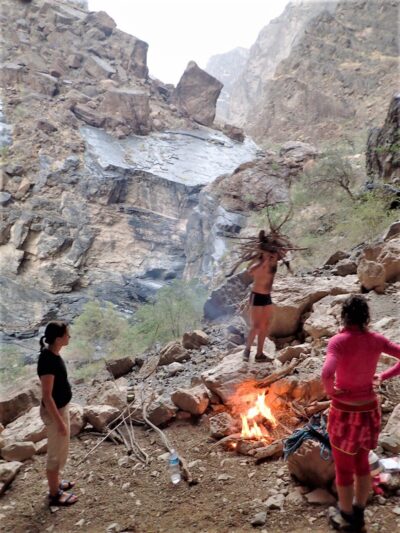
The Path:
Like most of Oman’s canyons, Wadi Saada is a mix of multiple terrains. Pools, knee deep ponds, streams, boulders, gravel, mud, jumps and a falaj (a falaj is a type of water irrigation system used in Oman).
Routes:
There is only one way for Wadi Saada, starting from Sallut and finishing at Wadi Muaiden. You can of course explore the canyon the opposite direction starting from the Wadi Muaiden village and finishing in Sallut.
I recommend following the water most of the time, except for a few places. About 30 minutes in, you will reach a plantation to the right, the path is not obvious, so find your way down by the water stream just below the plantation.
At one point the canyon becomes a winding small meander with water flowing from one pool to another (around 4 hours in at 23° 02’1.60″ N 57° 38.248’E). This is where you must take the old donkey path to the left side of the meander, overlooking at a grey slab on the opposite side, and bypass the meanders all the way to a very nice pool with a beautiful waterfall.
After this section, most of the canyon is wide open, and purely wayfinding exercise while bouldering around rocks. The last hour or so, you can walk on the old Falaj all the way to the end.
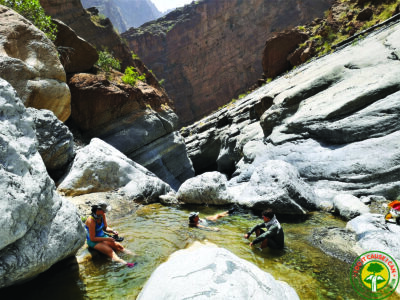
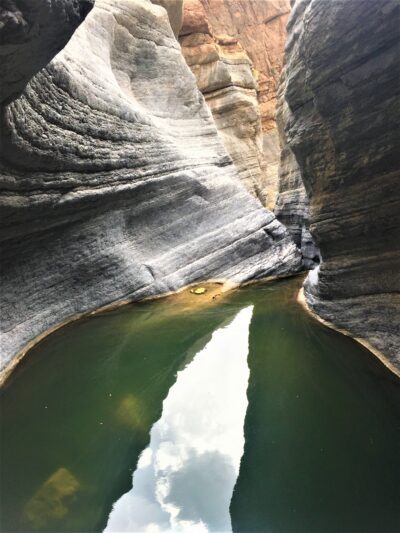
Canyon’s parameters:
- Non-technical
- Distance: 12-13 km
- Estimated duration: 8-10 hours
- Altitude loss: 670m
- Starting elevation: 1,460m
- Ending elevation: 790m
- Requires: swimming, climbing & bouldering around large rocks.
- Level: 2-B-PG-IV (based on ACA canyoning rating)
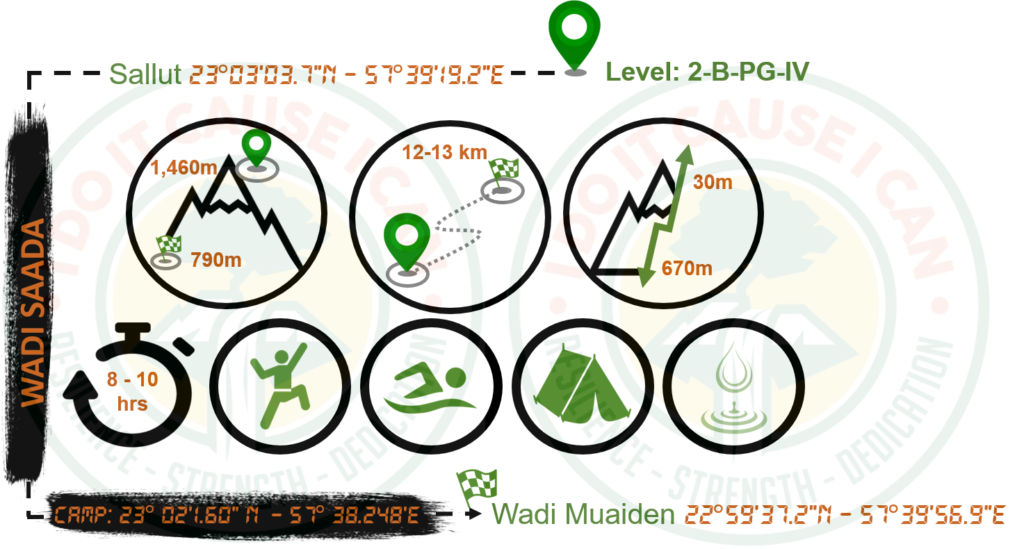
Coordinates:
- Starting points: Sallut 23°03’03.7″N – 57°39’19.2″E
- Camp point: 23° 02’1.60″ N – 57° 38.248’E (I don’t advise camping in this canyon, but if you had to, this would be a safe-ish spot, though it is small)
- End points: Wadi Muaiden 22°59’37.2″N – 57°39’56.9″E
Essentials:
- The temperature might be cooler, but don’t forget your sun scream.
- No need for wetsuits.
- Hiking backpack would do, but I highly recommend canyoning bags to avoid damaging your hiking backpack.
- No technical gear needed.
- There are many water streams on the go, and to be on a safe side make sure to use a water treatment tablet or a water purifier.
- Pack enough food for the day, I personally like to have a few extra bars for any emergencies.
- Waterproof (rugged cases are preferable) casings.
- Emergency blanket.
- First aid kit.
- Headlight
Fitness requirements:
You will need an acceptable fitness to do this canyon. It is a long canyon and requires lots of bouldering/climbing around on uneven terrain.
Scenery:
Like most of Oman’s canyon, you will be surrounded by enormous walls and large boulders. I liked 2 things in Wadi Saada, one is the constant change of scenery and second is the number of beautiful trees. And of course, not to mention the old abandoned settlements.
Red Tape:
- Always start early, the earlier the better.
- So, start super early, around 7-8am the latest so you will be out by sunset.
- Keep an eye on the sky, any signs of clouds, means there is potential rain. It could also rain on top of the mountain and build flash floods in the canyon. In case it is raining, find yourself a shelter with high grounds away from rockfalls and floods.
- Make sure you check the weather forecast of the area before heading into the canyon.
- Though Wadi Saada does not need a guide, if you are new to this game, make sure you hire an experienced guide/ (experience doesn’t only mean guiding your way, also finding solutions to problems, such as medical issues and floods)
- The ideal number for canyoning is usually 4-5 people of the same level. Any number higher equates to a slower time of completion.
- Please don’t leave trash behind, and if you see any trash laying around, do the community a favor and collect it.
- Always inform people of your trip, and expected return time.
Pictures:

